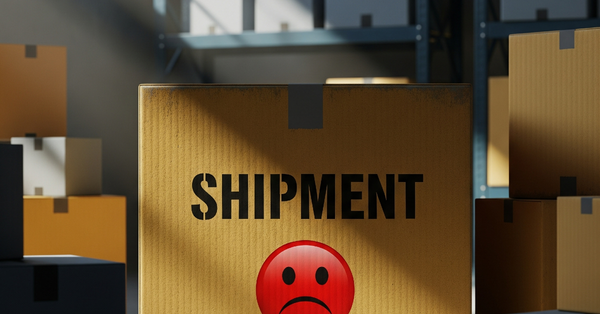How to Build a Customer-Loved Brand: The ACT CX Framework for Loyalty and Growth

“The app has just two moods: offline or confused.” It’s a joke, but also the reality of most customers. And it highlights a deeper gap: the one between what brands claim to deliver and what customers experience. You’ve seen it too—long queues, crashing apps, support that feels like a test of endurance—all from companies that loudly claim to be “customer-obsessed.”
But customer obsession isn’t a slogan or a mission statement. It’s a mindset, a fundamental way of building, deciding, leading, and serving that starts with the customer and works backwards, every time.
This isn’t just about “good service.” It’s about refusing to let internal complexity or ego become the customer’s burden. It's about driving tangible business growth and securing competitive advantage.
If we want to build brands that earn loyalty, not just attention, we need to change the way we think. Of course, shifting a company's entire mindset isn’t easy. It requires overcoming ingrained departmental silos, leadership complacency, and a natural resistance to change, often rooted in fear of the unknown or disruption to existing comforts.
Addressing this requires transparent communication, actively involving employees in the change process, and demonstrating leadership's unwavering commitment. But what if we had a simple, powerful framework to guide us?
Introducing the ACT CX Framework. A practical guide to help you build a brand customers truly love by focusing on three pillars:
- Always Connect & Test,
- Centralise Experience
- Transcend Thinking.
Let's get into it, shall we?
Pillar 1: Always Connect & Test
Understanding and continuously validating customer needs and experiences.
Listen Properly And Decode What’s Really Being Said
Listening to customers isn’t just about collecting feedback forms or scanning through social media complaints. Real listening means interpreting, identifying patterns, surfacing the root causes, and letting those insights shape your priorities and actions. This often involves more than just hearing words; it's about observing behaviour, connecting disparate data points, and asking "why" repeatedly until the core issue emerges. Use sentiment analysis, text analytics, and survey tools to extract deeper insights.
Mindset Shift: Stop assuming you already know what customers want. Start digging for the truth beneath their words.
Takeaways:
- Customers don’t always articulate the real issue; your job is to unearth it through active inquiry and observation.
- Repeated complaints often signal systemic problems, not outliers. Look for trends across channels, not just anecdotes.
- Data means nothing if you don’t act on it. Transform insights into tangible improvements that resonate with customer needs.
Example: Netflix didn’t wait for people to say, “We want to binge-watch.” They watched the data, analysing consumption patterns and engagement metrics, and then designed an experience around it, proving that sometimes, what customers do is more revealing than what they say.
Experience Your Own Experience
You can’t fix what you’ve never felt. So if you’re serious about customer experience, you need to walk in their shoes regularly. This isn't just a theoretical exercise; it requires a systematic approach to map and evaluate every interaction.
Mindset Shift: Stop assuming you already know what it feels like to be your customer. Start experiencing your touchpoints, end-to-end, using customer journey mapping tools and user testing methodologies.
Takeaways:
- Mystery shop your brand. Try calling support. Fill out your forms. Test your checkout process.
- Ask your team: “Where’s the friction?” Then fix it.
- Don’t wait for the Net Promoter Score (NPS) to tell you something’s wrong (not that it totally can), go find out.
Example: At United Bank for Africa (UBA), CX staff and leaders regularly mystery shop UBA branches — walking in the customer’s shoes to experience their service. It’s not just symbolic; they want first-hand context so issues aren’t reduced to metrics. This CX commitment helped move UBA from 14th to 3rd in retail banking and from 6th to 2nd in SME banking (KPMG West Africa, 2024).
Pillar 2: Centralise Experience
Embedding customer experience as a core, effortless standard across the entire organisation.
Make It Fast. Make It Simple. Make It Seamless.
Customers don’t care how complex your backend is. They care about how easy, fast, and smooth it feels to get what they need. This often means leveraging automation, intuitive UI/UX design principles, and streamlined operational processes.
Mindset Shift: Stop expecting customers to work around your internal chaos. Start making things effortless.
Takeaways:
- Speed and clarity matter. Every extra step invites churn.
- A painful checkout or onboarding process will cost you loyalty and revenue.
Example: PiggyVest, one of the most-used fintech apps in Nigeria, is designed for simplicity: clean onboarding, flexible savings options, and a dashboard you can understand at a glance. Most users say they can sign up, start saving, or withdraw within minutes, and the experience feels intuitive.
The brands that win are the ones that remove effort. Every second saved is a mark of respect for your customer’s time.
CX Isn’t a Department. It’s a Standard.
If your CX strategy only lives with the CX team, it’s not a strategy; it’s a suggestion. Customer experience must live everywhere.
Mindset Shift: Stop treating CX like a side project. Start making it a shared standard across the business.
Takeaways:
- Train everyone on CX principles.
- Align Key Performance Indicators (KPIs) and Objectives and Key Results (OKRs) with customer outcomes.
- Empower your team to act, not escalate. Deliver clear guidelines, invest in robust knowledge bases, and CRM systems that provide a holistic customer view.
- Fix issues, even if they aren’t “your job.”
Example: At Zappos, agents are empowered to go off-script, take their time, and do what’s right. One famously spent 10 hours on a call, and it wasn’t seen as a waste, but a win.
Pillar 3: Transcend Thinking
Fostering a culture where customer-centricity is a continuous, leadership-driven imperative.
Leaders Must Model Obsession
If your leadership team isn’t obsessed with customers, your teams won’t be either. Culture follows example, not slogans.
Mindset Shift: Stop assuming CX is “owned” by a manager or team. Start making it a leadership priority, driven by regular CX performance reviews and clear executive oversight of customer metrics.
Takeaways:
- CX goals should sit at the top table. Prove how CX has affected the business's bottom line (e.g. revenue).
- Great leaders ask: “How will this impact the customer?” as a default.
- Budget for CX innovation and experimentation.
Example: At Amazon, every meeting could include an empty chair, representing the customer’s voice. It wasn’t performative. It was a provocation: “What would they say about this?”
CX Is Ongoing, Not One-and-Done
The best brands know that needs and expectations evolve constantly. That’s why they don’t rest on what worked last year.
Mindset Shift: Stop thinking of CX as a project with an end. Start seeing it as a living system.
Takeaways:
- Great CX is iterative; you test, refine, improve, rinse and repeat. Embrace a culture of continuous optimisation.
- Complacency is the enemy. The second you think you’ve nailed it, you’ve already fallen behind.
- You don’t have to be perfect. You just have to get better at getting better.
Example: IrokoTV went from licensing Nollywood films on YouTube to launching its platform, then producing original content. Jumia moved from selling phones online to becoming Africa’s leading e-commerce and logistics platform. Flutterwave started with payments, then expanded into global commerce tools like Send and Store. Not because it was easy, but because the customers kept evolving.
Quick Action List: Start Practising the CX Mindset Today
- Walk your own customer journey and spot the blockers.
- Remove one point of friction immediately. You can start small.
- Decode feedback — don’t just collect it.
- Simplify one process.
- Empower your team to ACT.
- Keep testing, learning, and improving.
Your Weekly Challenge
What will you fix by Friday?
Customer obsession isn’t a philosophy. It’s a discipline. One built on action, iteration, and empathy. Businesses that prioritise CX outperform their peers in revenue, loyalty, and growth.
If you don’t make life easier for your customers, someone else will, and your customers will notice.



